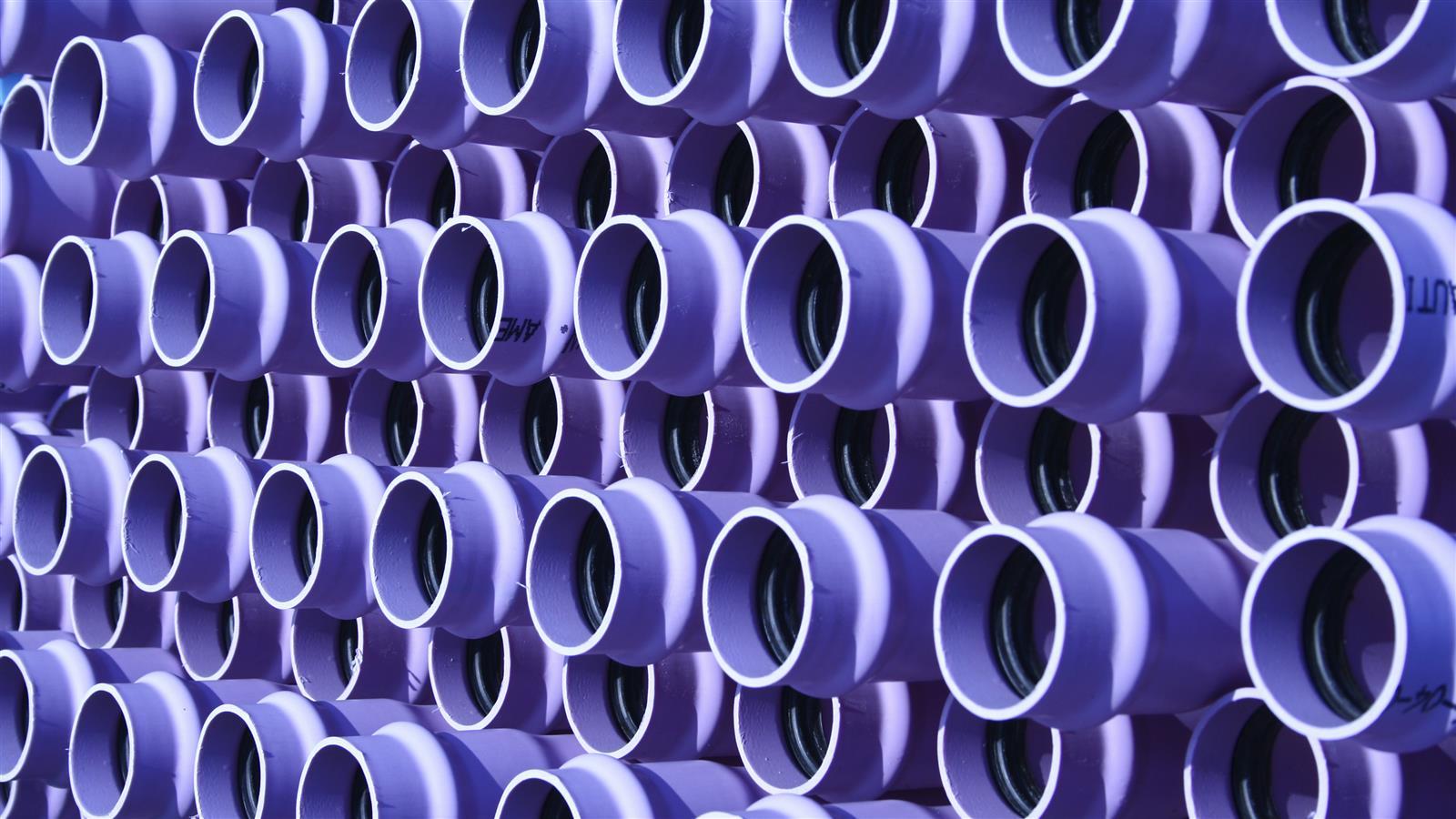Understanding if Water Reuse Makes Sense for Your Facility
The contents of this article were originally written at the request of the Water Environment Federation (WEF) headquarters for publication in WEF’s member association magazines.
Currently, the United States reclaims only about 7 to 8 percent of municipal wastewater, leaving tremendous potential for industries to tap into this underutilized water source. Municipal effluent can be applied to numerous applications—including cooling towers, boilers, high-tech and prepared food manufacturing—to reduce the demand for increasingly scarce fresh water sources. The following are considerations you should make if planning to use reclaimed water:
Cooling Towers: Evaporative cooling systems require significant volumes of make-up water to replace water lost through evaporation. Additionally, some water must be periodically discharged, referred to as “blow-down water,” so that dissolved solids concentrated during evaporation do not build up in the cooling water and damage equipment. When using reclaimed water for cooling towers, you must control biological regrowth (i.e., when nutrients are present and a disinfectant residual is not maintained) and scaling due to the presence of minerals (particularly calcium, magnesium, sulfate, alkalinity, phosphate, silica and fluoride).
Boiler Water Make-Up: Boiler water make-up is another great use for reclaimed water. While it requires extensive pre-treatment, the level of treatment is similar to what’s required for conventional potable water. Water quality requirements for boiler water make-up are dependent on the operating pressure of the boiler with higher pressures demanding higher quality water. Boilers are very susceptible to corrosion due to scale build-up, so that is something that must be controlled. Reverse osmosis for reuse water treatment can also allow water to be reused directly in boilers without water softening processes.
High-Tech Water Reuse: Reclaimed water is used in high-tech manufacturing, such as the semiconductor industry for microchip and circuit board manufacturing. Water quality for circuit board manufacturing is similar to that of boiler make-up water, requiring extensive pre-treatment. Reclaimed water is also used at associated facilities for cooling water and site irrigation. Intel Corporation in Santa Clara, California, recycles approximately 2 billion gallons of water per year, equivalent to 25 percent of its total water withdrawals. A large portion of this comes from using internally generated water. After ultra-pure water is used to clean silicon wafers during fabrication, the water is reused for industrial purposes, irrigation, cooling towers, scrubbers and other facility uses through special dedicated plumbing networks.
Prepared Food Manufacturing: Prepared food manufacturing is a water intensive process, especially if irrigation is considered. In many areas of the country, 70 percent of water is used for crop irrigation. Though still carefully navigating public perception concerns, the use of highly treated, drinking-water-quality reclaimed process water has recently increased. Companies such as Coca-Cola and PepsiCo/Frito-Lay are implementing water reuse as part of holistic approaches to reduce total resource use.
Currently, America reclaims only about 7 to 8 percent of municipal wastewater, leaving tremendous potential for industries to tap into this underutilized water source.
If you have these use cases and are ready to take the next step to investigate using reclaimed water, ask yourself these questions:
-
How should we use the water? Potential water reuse options include land application/disposal, landscape irrigation, cooling and industrial reuse. These uses vary in required water quality and treatment cost. You will want to have the use cases defined before determining if reclaimed water is the right solution.
-
What are the water flows at my facility? Facilities should start with a water survey that considers daily and seasonal use variations, assesses current and future water use (both quality and quantity), and determines potential combined uses of recoverable water. Reuse for cooling and irrigation, for example, will vary considerably depending on the season and weather conditions.
-
What are future water demands? Reuse considerations should include a water-needs study to predict future demands and determine opportunities on an industry-wide basis. This will help predict total treatment needs and capacities for design purposes and help determine your return on investment.
-
What is the public perception and acceptance of the type of reuse? The reuse of treated water will rely on acceptance of the end-user of the quality and reliability of the treatment technology, plant operations and continuity of “guaranteed quality,” including removal of unknown constituents that may be harmful. This is a critically important consideration and needs a business-based approach, as well as employee and customer education and programmatic methods to confirm acceptance—before implementation or construction of reuse technologies.
-
What is in the wastewater? Sampling and analytical testing are needed during various process conditions to determine minimum, maximum and average loadings on the treatment system. These may include nontraditional analytical parameters, salinity, hardness, alkalinity, silica, cations and anions, especially if membrane treatment systems are considered. These process streams can vary considerably in biochemical oxygen demand; chemical oxygen demand; fats, oils and grease; total suspended solids; pH; temperature; and, salt concentrations.
-
What waste disposal options are available? Water reuse must be compared to traditional discharge options. In reuse scenarios that use reverse osmosis and other membrane-based processes, the concentrated reject brine stream must be carefully managed and disposed. If this stream cannot be discharged into the publicly owned treatment works or surface water, then onsite evaporation or further concentration of the reject may be required, significantly increasing costs and the space required.
-
What are the potential costs and savings? Reuse scenarios should be considered from a life-cycle cost perspective. Costs may include those for capital and operating and maintenance (with labor, electric/energy, chemicals and residuals disposal being the primary ongoing operational costs). Water reuse treatment costs depend on the water quality required. As the quality increases, the costs increase somewhat exponentially, and the level of technical competence required of facility operators increases likewise.







